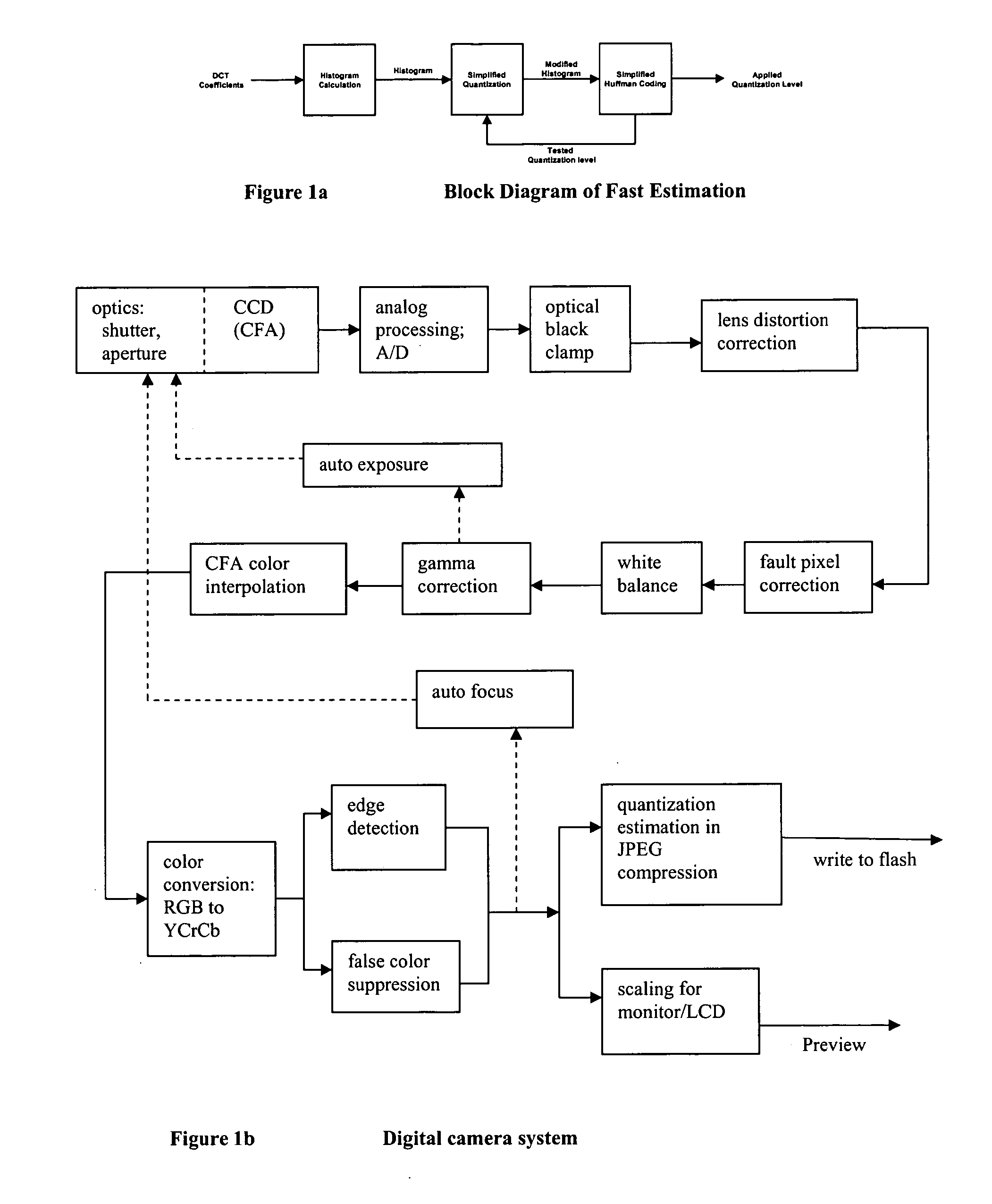Image code estimation
a technology of image code and estimation method, applied in the field of digital image processing, can solve the problems of delay corresponding to the speed of the encoding algorithm to output the actual code, delay in convergence to the target code size, etc., and achieve the effect of simplifying the feedback flow and more efficient quantization
- Summary
- Abstract
- Description
- Claims
- Application Information
AI Technical Summary
Benefits of technology
Problems solved by technology
Method used
Image
Examples
Embodiment Construction
1. Overview
Preferred embodiment image processing methods include low complexity estimates of the code size for Huffman (variable length code) encoding a block of quantized DCT coefficients; this provides quantization level feedback information for selection of a quantization level(s). The method uses a histogram of the non-zero DCT coefficient magnitudes of (an area of) a block together with normalized code-size functions (a function for representative “level”s and depending upon an average “run”) from the Huffman table. The average “run” in the code is estimated from the number of zero and non-zero quantized coefficients in (the area of) the block. FIG. 1a is a functional block diagram for a preferred embodiment method.
Preferred embodiment digital image systems (such as cameras) include preferred embodiment image processing methods. FIG. 1b shows in functional block form a system (digital stiall camera) which incorporates preferred embodiment methods as illustrated in the JPEG...
PUM
 Login to View More
Login to View More Abstract
Description
Claims
Application Information
 Login to View More
Login to View More - R&D
- Intellectual Property
- Life Sciences
- Materials
- Tech Scout
- Unparalleled Data Quality
- Higher Quality Content
- 60% Fewer Hallucinations
Browse by: Latest US Patents, China's latest patents, Technical Efficacy Thesaurus, Application Domain, Technology Topic, Popular Technical Reports.
© 2025 PatSnap. All rights reserved.Legal|Privacy policy|Modern Slavery Act Transparency Statement|Sitemap|About US| Contact US: help@patsnap.com



